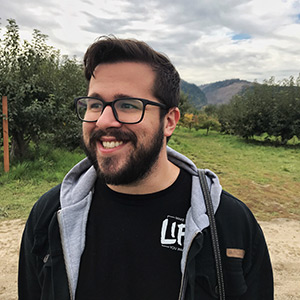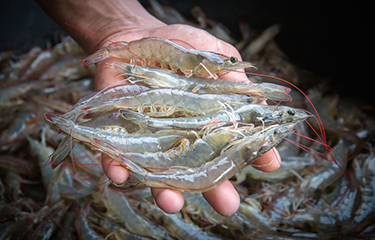Jim Wyban, a prominent shrimp researcher and owner of consultancy Marine Genetics LLC, believes a shrimp aquaculture boom could be on the horizon – if someone can crack the code to turning a profit while competing with foreign imports.
In the 1990s, Wyban led the development of a specific pathogen-free (SPF) shrimp broodstock as the principal investigator of the U.S. Shrimp Consortium at Oceanic Institute, subsequently doubling the U.S. production of shrimp.
Ahead of his upcoming presentation at Aquaculture America 2020, SeafoodSource reached out to Wyban to talk about the future of shrimp aquaculture in the United States, what’s driving innovation in the sector, and what companies need to do to capitalize on the country’s massive appetite for shrimp.
SeafoodSource: How would you describe the current state of shrimp aquaculture in the United States? What’s the market look like for businesses trying to enter the sector?
Wyban: Shrimp has been and continues to be the number-one seafood product consumed by Americans. Year after year, shrimp is the top item, and the vast majority of that is imported shrimp. There is a shrimp fishery in the Gulf of Mexico and a miniscule shrimp farming industry [located] primarily in Texas, at least in a traditional sense, where it’s outdoor pond aquaculture.
The big thing that’s happening right now that’s interesting to me is an increase in indoor, controlled environment, high-density shrimp aquaculture. There are quite a few people doing that in the United States in all kinds of crazy places – Illinois and Iowa and Minnesota. I haven’t seen anybody compile a list but it’s somewhere around 50 projects in the United States operating at various levels where people are farm-raising marine shrimp in some sort of tank-based indoor system.
The U.S. market for shrimp is almost insatiable. The argument can be made that if you farm-raise the animals closer to the big markets, you’ll eliminate the carbon footprint from global shipping and can deliver a fresh product to these local markets. There are a lot of people trying to do that — but to date, very few of them have cracked the code of how to do that and scale it.
They may be able to do four little tanks of shrimp and sell them at a farmer’s market for USS 20 [EUR 18] a pound to their community and that works, but the larger market is not going to pay those kinds of prices. They’ll have to come closer to the price of the obvious competition, which is imported shrimp from the global supply. There’s a sort of tension there between which of these small or not-so-small projects is going to break through and actually crack the code of that intensive, controlled-environment style farming to service the much larger market in the United States — a couple billion pounds a year in consumption.
SeafoodSource: Are there signs of any companies nearing that tipping-point and being able to scale their operations?
Wyban: There are a few examples that are very close. I just returned from a visit to Florida to do some consulting work with American Penaeid, or API. They’re an intensive shrimp farm based on Pine Island on the west coast of Florida. They’re doing what you would call a bio-flock style, tank-based, greenhouse-based production – intensive or super intensive – and growing shrimp at very high densities. Most of their shrimp is being sold fresh, delivered fresh to market. The president of that company, Robin Pearl, says he thinks the market is immense for his product and he says he can’t produce enough. He’s doing about a million pounds a year. I can only go by what I’m told, but that seems very exciting.
Just on the other side of Florida, Charoen Pokphand Foods, the big Thai shrimp feed company, has bought property and are developing an indoor, super-intensive shrimp farm to do the same thing. CPF wouldn’t be doing that unless they thought they could make money. They’ve been working on this technology in Thailand, on their home court, for a few years. Based on that investment in Florida, I would have to assume that they feel like they’ve cracked that code and feel confident that they can produce shrimp in that context and economically in the U.S. That’s a very big development.
SeafoodSource: What’s driving this recent expansion, or investment, in U.S. operations?
Wyban: It’s a combination of technology advancements overlaying – the obvious 800-pound gorilla in the room – the U.S. being the largest market in the world. The market is here, it’s crystal clear. You just have to be able to supply shrimp at a reasonable price to compete.
On the technology side, there have been a number of developments that are really key to making this feasible. One is the domestication and subsequent breeding of white shrimp [P. vannamei]. I was involved from the beginning in terms of developing specific pathogen-free [SPF] stock and that was a huge development. Since the '90s, 30 years now, we’ve had SPF shrimp available, which allows farmers to avoid disease episodes that used to be so devastating. What’s happened over the past 30 years of breeding – those SPF shrimp are now at least 30 generations domesticated. Through generations of breeding those animals, they have gotten calmer and are capable of being stocked at much higher densities without having a negative response, their reproduction is easier now because they’re domesticated. They have better disease resistance. We estimate their growth rate improves about 10 percent each generation so they’re around three times faster to grow than when we started this process. All of those factors would contribute to the economics of the situation.
SeafoodSource: Do you think that building a strong brand to compete with imports will be a struggle for a U.S. industry?
Wyban: I think API in Florida is doing a good job of building a market for their U.S.-grown, chemical-free, non-GMO shrimp. All those good things. That’s what it’s going to take. These companies can’t assume that the market is just going to welcome them in. It’ll still be about economics, but you also have to develop some branding to appeal to the market.
SeafoodSource: What is the biggest challenge you see these U.S.-based operations facing?
Wyban: There’s no question that these two companies can do the production. This kind of state-of-the-art production is being done in lots of places in research facilities but the economics of it is the fundamental question. People are starting to invest in this space, but the economics of it all remains to be seen. The RAS technology, has not really been proven at scale, both technically and economically. It will be very interesting to watch this unfold, but we’re on the brink of it. I believe someone will crack that code soon.
Photo courtesy of Weera Sreesam/Shutterstock







